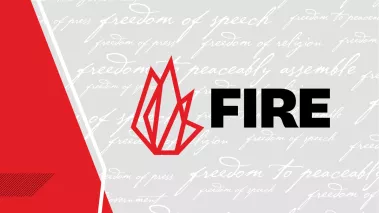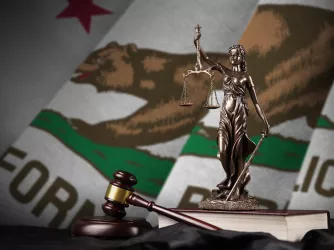Table of Contents
Schools Should Realize That 'Davis' Is the Solution

As most Torch readers and FIRE followers know, on May 9 the Departments of Justice (DOJ) and Education (ED) entered into a settlement agreement, which they referred to as a “blueprint,” with the University of Montana. Today, FIRE and a broad coalition of organizations and distinguished civil libertarians, attorneys, and academics sent DOJ and ED a letter urging the Departments to retract the blueprint immediately.
In the blueprint, “sexual harassment” is problematically defined as “unwelcome conduct of a sexual nature,” including “verbal conduct.” The blueprint explicitly rejects the use of an objective, “reasonable person” standard in evaluating whether conduct constitutes sexual harassment. Without the objective component, speech protected by the First Amendment may constitute sexual harassment if a listener is offended, however unreasonably.
Today’s coalition letter addresses how that broad definition of sexual harassment could be applied to many forms of protected speech. The letter explains:
Under the blueprint’s mandate, sexual or gender-based speech that is offensive to only the most unreasonable student constitutes “sexual harassment” prohibited by Title IV of the Civil Rights Act of 1964 and Title IX of the Education Amendments of 1972—despite being protected by the First Amendment. The threat to free expression and academic freedom is obvious; per the blueprint’s definition, a classroom discussion of Lolita, a campus reading of Allen Ginsberg’s “Howl,” a dorm-room viewing of a Sarah Silverman comedy routine, or a cafeteria debate about same-sex marriage will each constitute “sexual harassment” if a single student is made uncomfortable. This untenable result is plainly unconstitutional and sharply at odds with the United States Supreme Court’s famous conception of the American college campus as being “peculiarly the ‘marketplace of ideas.’”Healy v. James, 408 U.S. 169, 180 (1972) (internal citation omitted).
Indeed, the blueprint’s definition ignores decades of long-settled precedent establishing the primacy of the First Amendment on public campuses. See, e.g., Widmar v. Vincent, 454 U.S. 263, 268–69 (1981) (“With respect to persons entitled to be there, our cases leave no doubt that the First Amendment rights of speech and association extend to the campuses of state universities.”);Healy, 408 U.S. at 180 (“[T]he precedents of this Court leave no room for the view that, because of the acknowledged need for order, First Amendment protections should apply with less force on college campuses than in the community at large. Quite to the contrary, ‘the vigilant protection of constitutional freedoms is nowhere more vital than in the community of American schools.’”).
Colleges and universities have a legal and moral duty to effectively respond to all accusations of sexual harassment that, if true, would be actionable. However, institutions must accomplish this goal without trampling student and faculty First Amendment rights. These dual responsibilities need not be in tension. The solution, as FIRE explained in our May 7, 2012, coalition letter to ED’s Office for Civil Rights (OCR), is:
to make clear that institutions satisfy Title IX by adopting no more and no less than the definition of prohibited harassment in the educational context set forth by the Supreme Court of the United States in Davis v. Monroe County Board of Education, 526 U.S. 629, 651 (1999).
In Davis, the Court gave institutions the tools they need to respond effectively to student-on-student sexual harassment when it held that behavior constitutes hostile environment sexual harassment if it is discriminatory, targeted, and “so severe, pervasive, and objectively offensive that it can be said to deprive the victims of access to the educational opportunities or benefits provided by the school.”
In its January 19, 2001, Revised Sexual Harassment Guidance, OCR endorsed this standard, stating:
Although the terms used by the Court in Davis are in some ways different from the words used to define hostile environment harassment in the 1997 guidance (see, e.g., 62 FR 12041, "conduct of a sexual nature is sufficiently severe, persistent, or pervasive to limit a student's ability to participate in or benefit from the education program, or to create a hostile or abusive educational environment"), the definitions are consistent. Both the Court's and the Department's definitions are contextual descriptions intended to capture the same concept - that under Title IX, the conduct must be sufficiently serious that it adversely affects a student's ability to participate in or benefit from the school's program. In determining whether harassment is actionable, both Davis and the Department tell schools to look at the "constellation of surrounding circumstances, expectations, and relationships" (526 U.S. At 651 (citing Oncale )), and the Davis Court cited approvingly to the underlying core factors described in the 1997 guidance for evaluating the context of the harassment. Second, schools benefit from consistency and simplicity in understanding what is sexual harassment for which the school must take responsive action. A multiplicity of definitions would not serve this purpose.
OCR and the Department of Justice would be wise to retract the blueprint and make clear that the Davis standard provides the controlling and constitutional definition of peer sexual harassment in the educational context.
Want to know more about the ED/DOJ "blueprint"? Check out FIRE's Frequently Asked Questions here!
Do you want to learn more about the history of free speech in schools? Or important First Amendment court cases? Check out FIRE’s extensive library of First Amendment resources.
Recent Articles
FIRE’s award-winning Newsdesk covers the free speech news you need to stay informed.

FIRE to SCOTUS: TikTok ban violates Americans' First Amendment rights

California and other states are rushing to regulate AI. This is what they’re missing

One day after FIRE lawsuit, Congress passes changes to filming permits in national parks
